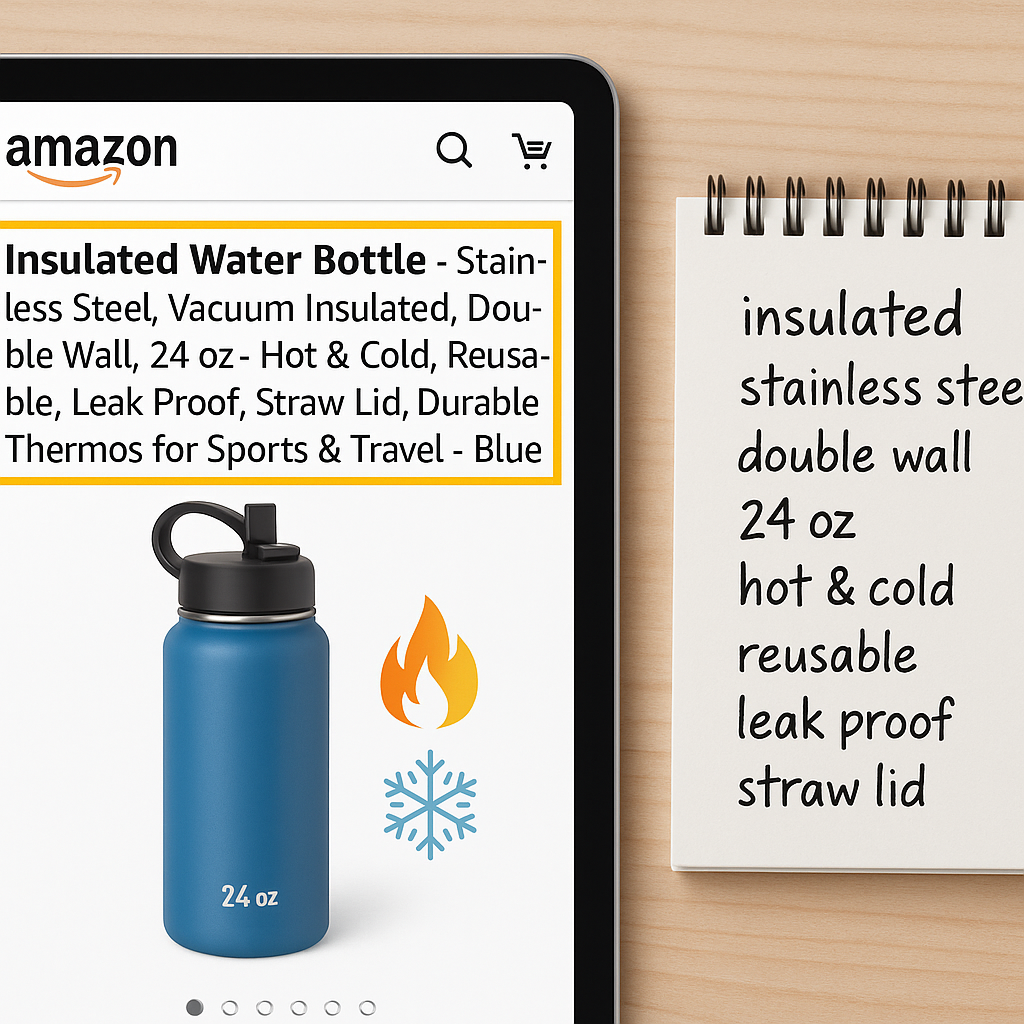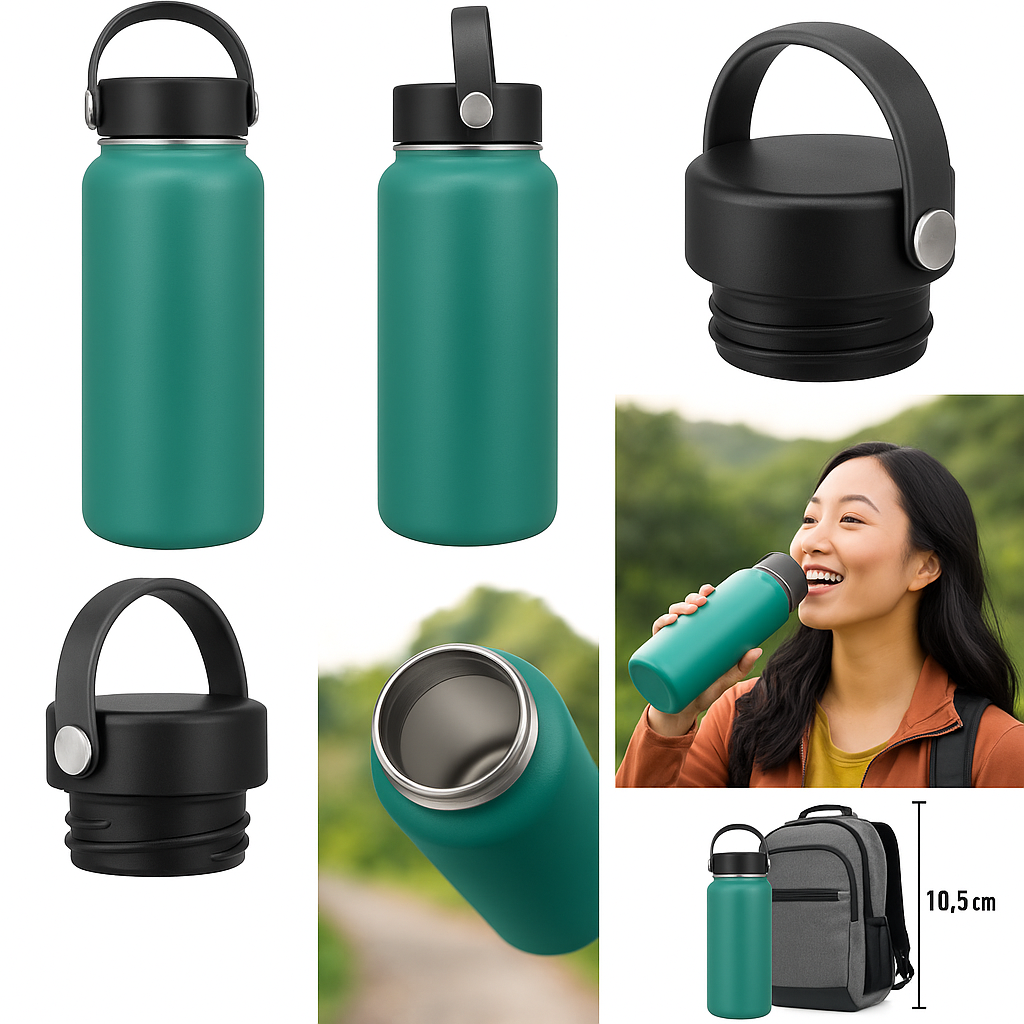7 Proven Amazon SEO Tips to Skyrocket Your Rankings
In the competitive world of Amazon selling, visibility is everything. With millions of products competing for attention, Amazon SEO has become the vital difference between thriving stores and those struggling to gain traction. Unlike traditional search engines, Amazon’s algorithm is specifically designed to connect shoppers with products they’re most likely to purchase—making optimization not just beneficial, but essential for sustained success.
Amazon SEO is the process of fine-tuning your product listings to align with what Amazon’s search algorithm values most. By understanding and leveraging these ranking factors, sellers can dramatically improve their products’ visibility in search results, connect with more potential customers, and ultimately drive more sales. The key difference with Amazon’s approach is its laser focus on purchase likelihood and conversion potential.
In this comprehensive guide, you’ll discover seven proven, actionable strategies that successful sellers use to climb Amazon’s search rankings. From keyword research fundamentals to advanced optimization techniques, we’ll explore the complete toolkit needed to outperform competitors and capture more organic sales in 2023 and beyond.
1. Conduct comprehensive keyword research
Effective keyword research forms the foundation of any successful Amazon SEO strategy. By identifying exactly what terms potential customers are searching for, you can align your listings with real buyer intent and capture relevant traffic.
Start by brainstorming a core list of seed keywords that describe your product’s primary features, benefits, and use cases.
Then expand this list using specialized Amazon keyword tools like Helium 10, Jungle Scout, or Amazon’s own resources like Brand Analytics and Product Opportunity Explorer. These tools reveal actual search volume data and competitive metrics to help prioritize your efforts.
When building your master keyword list, focus on three distinct categories:
- Primary keywords: These are your high-volume, competitive terms that directly describe your product (e.g., “stainless steel water bottle”)
- Secondary keywords: Terms that elaborate on features, benefits or variations (e.g., “insulated water bottle with straw”)
- Long-tail keywords: More specific phrases with lower search volume but higher conversion intent (e.g., “leak-proof insulated water bottle for hiking”)
Don’t overlook competitor research as a valuable keyword source. Analyze listings of top-performing products in your category to identify patterns in their keyword strategy. Look for terms they consistently use across titles, bullets, and descriptions.
A practical keyword research workflow might look like this:
- Generate 5-10 seed keywords describing your product
- Run these through an Amazon-specific keyword tool to expand your list
- Analyze the top 5 competing products for additional terms
- Categorize keywords by search volume and relevance
- Identify which keywords belong in your title versus bullets or backend
Remember that keyword research isn’t a one-time task. Search trends evolve, and regularly refreshing your keyword strategy (ideally quarterly) ensures your listings stay aligned with how customers are searching right now.
2. Optimize product titles for maximum visibility
Your product title serves dual purposes: it creates the first impression for shoppers and provides critical ranking signals to Amazon’s A10 algorithm.
When crafting your product title, strategic keyword placement matters significantly. Position your most important target keywords within the first 50-80 characters, as these carry more weight in Amazon’s ranking calculations. However, this doesn’t mean stuffing every possible keyword into your title—readability remains paramount.
The optimal title structure typically follows this pattern:
- Brand name: Start with your brand for recognition and indexing
- Product type: Clearly identify what you’re selling
- Key differentiators: Size, color, material, quantity
- Target audience/use case: Who it’s for or how it’s used
Consider this before-and-after example:
Before: “Water Bottle 32oz Insulated”
After: “HydroMax 32oz Insulated Water Bottle – Stainless Steel Vacuum Flask with Leak-Proof Lid for Hiking & Outdoor Activities”
While Amazon allows up to 200 characters for most categories, aim for 150-180 characters to avoid truncation on mobile devices. Always check Amazon’s style guides for your specific category, as requirements can vary significantly between departments.
Remember that keyword stuffing (cramming keywords unnaturally) can actually harm both your rankings and conversion rates. Amazon’s algorithm increasingly recognizes natural language patterns, and shoppers are turned off by awkward, keyword-stuffed titles. Strike a balance between keyword inclusion and creating a clear, compelling title that makes sense to human readers.
3. Write compelling bullet points and descriptions that convert
Bullet points and product descriptions serve a dual purpose in your Amazon SEO strategy: they help the algorithm understand what your product is about while persuading customers to make a purchase.
For your bullet points, focus on leading with benefits before features. Each bullet should address a specific customer need or desire, incorporating relevant keywords naturally within the flow. Aim for 5-7 bullets, each between 150-200 characters, to maximize impact without overwhelming readers.
Consider this structure for effective bullet points:
- Benefit-first approach: Start with “how” this feature improves the customer’s life
- Technical specification: Include measurable details or specifications
- Social proof element: Where appropriate, mention customer feedback
- Secondary keywords: Incorporate naturally without disrupting readability
Your product description offers additional space to expand on product details while incorporating long-tail keywords that couldn’t fit elsewhere. Rather than repeating your bullet points, use this space to tell your brand story, address potential objections, or explain complex features in greater detail.
For brands registered with Amazon’s Brand Registry, A+ Content (formerly Enhanced Brand Content) provides a significant competitive advantage. This feature allows you to replace the standard product description with visually rich content including comparison charts, enhanced images, and formatted text. While A+ Content isn’t directly indexed for keywords, it significantly improves conversion rates—which indirectly boosts your search ranking through increased sales velocity.
When writing your descriptions, anticipate and answer customer questions before they arise. Study your product reviews and competitor Q&A sections to identify common questions, then address them proactively in your content. This approach not only improves conversion rates but also reduces return rates by setting accurate expectations.
4. Use high-quality product images and alt-text for better rankings
Product images do much more than simply show your product—they’re a critical ranking factor that signals listing quality to Amazon’s algorithm while dramatically influencing conversion rates.
Amazon requires your main product image (the one that appears in search results) to meet specific criteria: a clean white background, the product filling 85% or more of the frame, and professional quality with accurate color representation. This main image must exclusively show the product being sold, without props, text overlays, or lifestyle elements.
Beyond the main image, Amazon allows 5-8 additional photos depending on your category. Use these slots strategically to showcase:
- Multiple angles: Show your product from different perspectives
- Size/scale reference: Include a person or common object for size context
- Detail shots: Highlight important features or textures
- Lifestyle images: Show the product in actual use
- Packaging shots: Especially valuable for gift items
- Comparison images: Visual size charts or feature comparisons
Upload all images at least 1000 pixels on the longest side (ideally 2000+) to enable the zoom feature, which significantly improves conversion rates. Professional photography is a worthwhile investment, but if budget is limited, consider tools like PhotoRoom or RemoveBackground to create clean, professional-looking product shots.
While not visible to customers, alt-text for images provides additional keyword opportunities and accessibility benefits. When adding images to your listing, include relevant keywords in your alt-text fields—but keep them descriptive and accurate rather than keyword-stuffed. For example, “woman hiking with 32oz blue insulated water bottle” is more effective than “water bottle insulated stainless steel hiking bottle vacuum insulated.”
According to multiple studies, listings with high-quality images following Amazon’s guidelines see conversion rates 2-3 times higher than those with basic or non-compliant images—directly impacting your search visibility through improved performance metrics.
5. Leverage backend and hidden keywords to expand reach
Backend keywords provide a powerful opportunity to extend your product’s searchability without cluttering your customer-facing content. These hidden search terms allow you to capture additional traffic from relevant queries that might not naturally fit into your visible listing elements.
Amazon provides five backend keyword fields, with a total limit of 249 bytes (characters) per field.
While this might seem restrictive, strategic use of these fields can significantly expand your product’s discoverability. Focus on these high-value backend keyword opportunities:
- Common misspellings: Capture searches from customers who mistype key terms
- Alternate names: Regional variations or different terms for the same product
- Related products: Items frequently purchased alongside your product
- Foreign language terms: Especially if your product appeals to multilingual audiences
- Abbreviations and acronyms: Industry-specific shorthand relevant to your product
When adding backend keywords, follow these best practices to maximize effectiveness:
Avoid repeating terms already present in your title, bullets, or description—Amazon’s system already indexes these. Separate keywords with spaces rather than commas or semicolons, as these count against your character limit without providing any benefit. Focus on relevance over volume; irrelevant keywords may initially drive impressions but will harm your conversion rate and ultimately reduce rankings.
For example, if selling a yoga mat, your backend keyword field might look like: “exercise fitness workout gym pilates meditation beginner thick nonslip excercise yogga mats excerise yogamat”
Review your backend keywords quarterly, especially after making significant changes to your customer-facing content. This ensures you’re not duplicating terms unnecessarily and allows you to incorporate new search trends or terminology as they emerge in your market.
6. Manage pricing and inventory levels to support organic ranking
While many sellers focus exclusively on listing optimization, Amazon’s A10 algorithm places significant weight on operational factors like pricing competitiveness and inventory management. These elements directly impact your ranking potential by signaling product desirability and reliability to Amazon’s system.
Pricing strategy significantly influences both your conversion rate and your Buy Box eligibility—both critical ranking factors. Amazon’s algorithm favors listings priced competitively within their category, though this doesn’t necessarily mean being the absolute lowest price. Instead, aim to position your pricing within what customers perceive as the “fair value range” for your product type and quality level.
Monitor competitor pricing using automated tools like Seller Lab’s Ignite or Jungle Scout’s Market Intelligence to stay aware of market movements. Consider implementing a dynamic pricing strategy that adjusts within predetermined parameters based on competitor activity and inventory levels.
Inventory management is equally crucial for ranking stability. When products go out of stock, Amazon not only removes them from search results but also “resets” some of their ranking signals when inventory returns. This can result in a significant drop in organic visibility that may take weeks to rebuild.
For effective inventory management:
- Implement restock alerts at appropriate thresholds based on your lead time
- Use forecasting tools that incorporate seasonal trends and growth patterns
- Consider Amazon’s FBA inventory programs for more consistent stock levels
- Monitor sell-through rate to avoid both stockouts and excessive storage fees
According to Amazon’s own documentation, listings with consistent in-stock status and competitive pricing receive preferential treatment in search results, particularly for high-converting search terms. By treating these operational factors as part of your SEO strategy rather than separate business functions, you create a more holistic approach that aligns with how Amazon’s algorithm actually evaluates listings.
7. Drive sales and reviews through ads and customer engagement
While traditional SEO focuses primarily on content optimization, Amazon’s algorithm places extraordinary weight on performance metrics—particularly sales velocity and authentic customer reviews. These factors create a powerful feedback loop: better performance leads to higher rankings, which generate more sales, further improving rankings.
Amazon’s advertising platform offers the most direct way to jumpstart this virtuous cycle. Sponsored Products campaigns targeting your most valuable keywords allow you to gain immediate visibility while the organic ranking process builds momentum. This strategy works particularly well for new product launches or when trying to rank for highly competitive terms.
To leverage advertising for SEO benefits:
- Create keyword-specific campaigns that mirror your organic keyword strategy
- Analyze conversion data to identify which keywords convert best
- Gradually reduce ad spend on terms where you’ve established strong organic rankings
- Drive external traffic through social media or email marketing (Amazon rewards off-platform traffic)
Customer reviews serve as both a ranking factor and a conversion driver. While Amazon strictly prohibits manipulating or incentivizing reviews, several compliant strategies can help generate authentic feedback:
Enroll in the Amazon Vine program, which connects your products with trusted reviewers. Use Amazon’s “Request a Review” button at the optimal time (typically 5-7 days after delivery). Focus on exceptional product quality and customer service to naturally encourage positive feedback. Consider including product inserts with QR codes leading to your Amazon storefront (not directly to reviews).
The relationship between sales performance and search ranking creates a compound effect over time. Listings with strong sales history and positive reviews receive preferential placement, which drives more sales, creating sustainable ranking improvements. This makes early performance critical—consider temporarily accepting lower margins through competitive pricing or higher ad spend during launch phases to establish this momentum.
By viewing advertising and customer engagement as integral parts of your SEO strategy rather than separate activities, you create alignment between your marketing efforts and Amazon’s algorithm priorities, resulting in more sustainable ranking improvements over time.
Bringing it all together: your holistic Amazon SEO strategy
The most successful Amazon sellers understand that true optimization requires a coordinated approach across all seven of these ranking factors. Each element reinforces the others, creating a compound effect that’s far more powerful than any single tactic in isolation.
Start by establishing your keyword foundation through comprehensive research, then methodically apply these terms across your listing—from title and bullets to backend keywords and advertising campaigns. Complement your keyword strategy with exceptional imagery, competitive pricing, and reliable inventory management.
Remember that Amazon SEO isn’t a one-time project but an ongoing process of refinement. Set a regular cadence for reviewing performance data, updating keywords based on search trends, refreshing images, and adjusting pricing strategies. The marketplace and algorithm continually evolve, and your optimization approach must evolve alongside them.
Most importantly, never lose sight of the customer experience at the heart of Amazon’s algorithm. While the technical aspects of SEO matter significantly, Amazon ultimately rewards listings that genuinely serve shopper needs through relevant information, fair pricing, quality products, and reliable fulfillment. By maintaining this customer-centric focus while implementing these proven optimization techniques, you create listings that satisfy both the algorithm and the actual humans making purchasing decisions.
Implement these seven strategies consistently and you’ll build a foundation for sustainable organic growth that continues delivering results long after your initial optimization work is complete.
Frequently asked questions
What is the Amazon A10 algorithm and how does it impact rankings?
The A10 is Amazon’s current search algorithm, weighing factors like relevance, sales performance, external traffic, and seller authority to determine product rankings.
How often should I update my Amazon keywords and listings?
Review and update your keywords every 1–3 months, or whenever you notice shifts in ranking or sales. Regular optimization keeps you aligned with evolving search trends.
Can I use the same keywords in multiple parts of my listing?
Yes, but avoid redundancy. Use core keywords in your title, while diversifying secondary and long-tail keywords across bullet points, description, and backend terms for wider reach.
How do backend keywords differ from the keywords in my title or bullets?
Backend keywords are invisible to shoppers, enabling you to target valuable synonyms, misspellings, or related queries not naturally present in visible content.
What is the fastest way to improve my Amazon rankings?
The fastest route is a combination of optimized listings (titles, bullets, images, keywords) and running targeted Sponsored Product ads to drive initial sales velocity.
